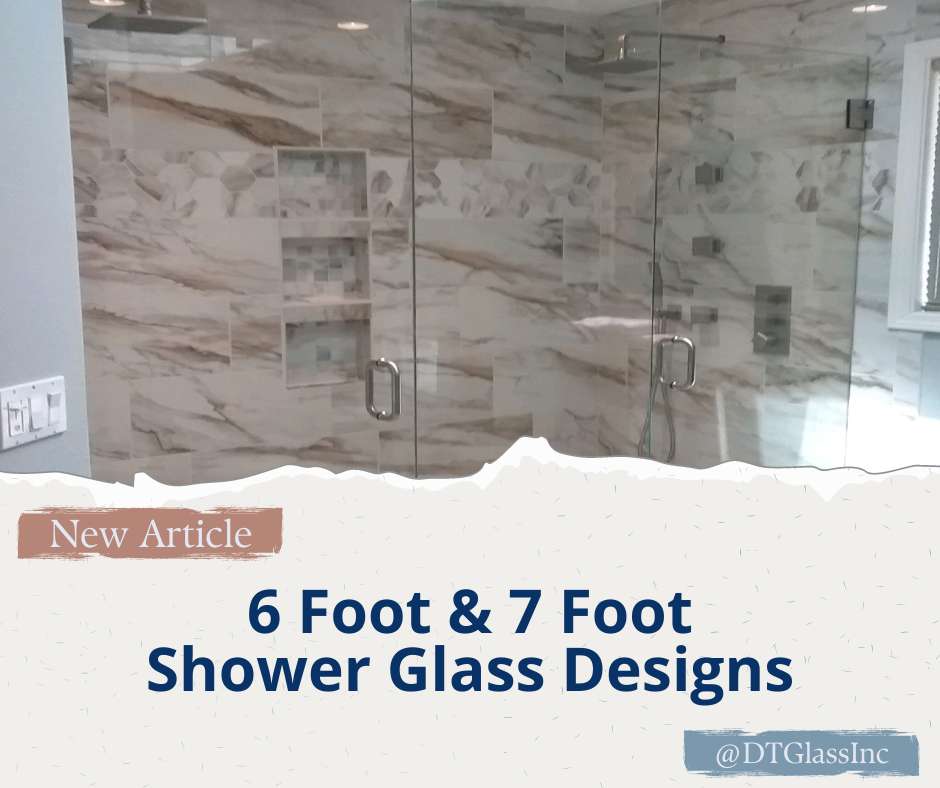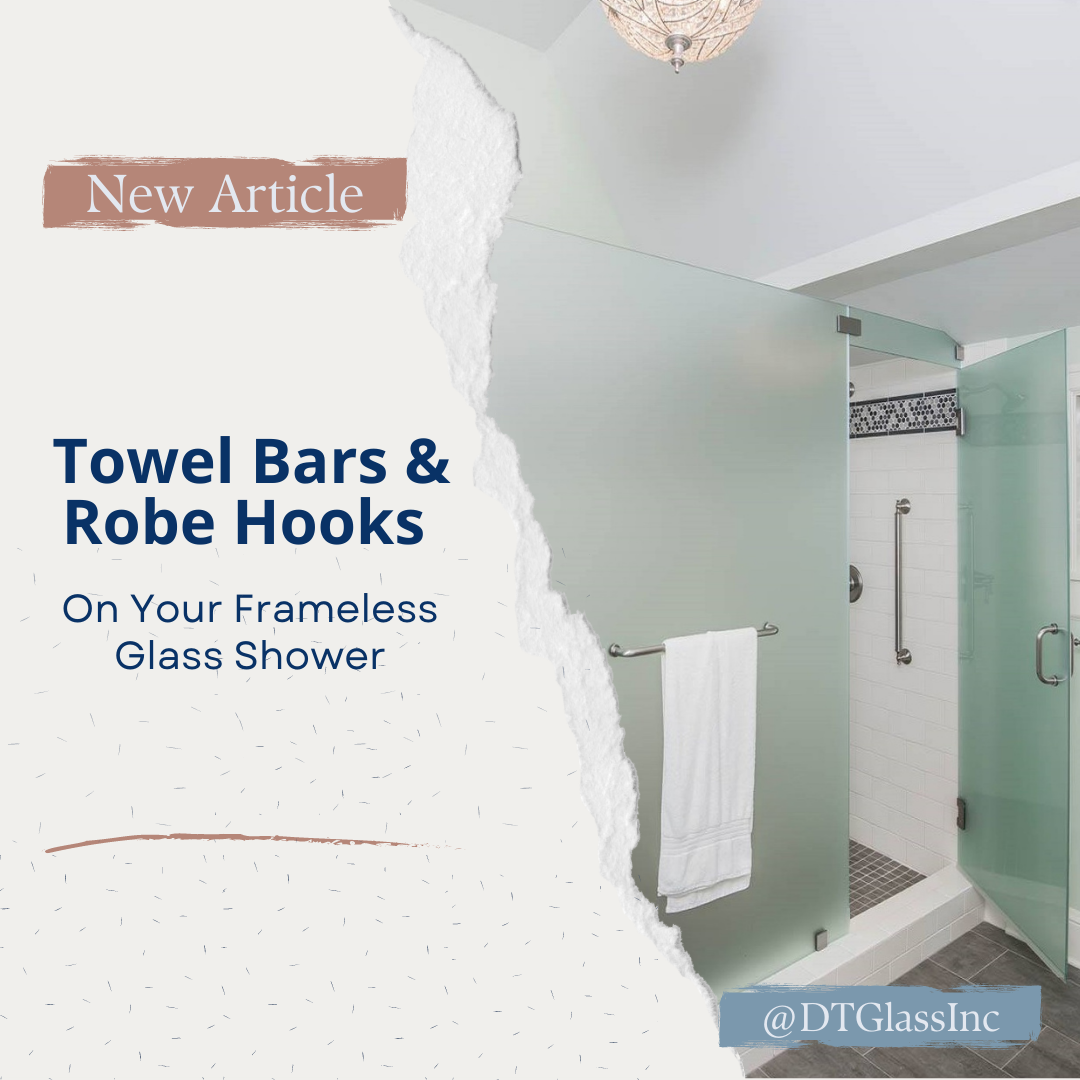
- glass@dtglassinc.com
- (503)-650-6373
TEXTURED TILE AND OVERHANGS
By Shannon Mckinney – DT Glass, Inc.
Finding the right tile for your bathroom means exploring color and size, creating depth and interest, and integrating with the rest of the colors and finishes in the room. But none of that matters if the tile doesn’t fit the intended use (floor tile shouldn’t be too slick, large format is bad for slopes, etc). Here we add just a few more criteria for selecting tile based on the requirements of the shower glass.

With the right tile selected, shower glass will disappear into the beauty of the room. Unfortunately, the wrong tile choices will stand out next to the glass, or even require changes in the original glass plan. Knowing what works with glass up front makes the difference between everything falling into place versus having to make last minute concessions.
The good news is that there are only a few tile limitations that we need to watch out for, and we’re only concerned with the tile that connects to glass at the walls or curb. The rest of the shower walls and floor can be selected with wild abandon (or at least under the scrutiny of someone else’s blog).
Avoid Glass Tile
Wait, shouldn’t a glass shop love glass tile? While we may appreciate its beauty, we know better than anyone how temperamental glass can be. Most glass tile has undergone a heat process to cure the paint to the glass. This process changes the chemical bonds in the glass making drilling physically impossible without cracking, in the same way that tempered glass will not cut without breaking.
How to deal with glass tile in locations where hardware must be attached:
Install top and bottom pivot hinges to reduce the amount of drilling needed compared to wall hinges
Change to channel instead of clips so that screws can be positioned at grout lines
Remove glass tile from hinge or clip areas and replace it with another tile
Pre-cut tile where it needs to be drilled and add a grout line
Leave the resulting cracks, adding a little silicone to seal. Give it a name and welcome it to the family.
Avoid Wavy Tile
Wavy tile could mean tile with a built-in pattern and texture, it could also mean hand-made tile with inherent inconsistency, and it could also mean otherwise flat tile that has not been installed flat (i.e. DIY). Whatever the reason behind the wave, once we place our straight edge of glass next to it, those inconsistencies become empty holes between the wall and the glass. Unless the tile next to the glass is going to be replaced, we only have two choices at glass installation: we could leave the spaces open if they are not in a leak-prone area, or fill them with silicone. Either way creates the look of an unfortunate error in judgement, lack of skill, or both.
Stop Protruding Tile Before It Reaches the Glass
Decorative moldings and protruding designs can be used within the interior of a shower but should come to a decorative completion before reaching the glass. Imagine the width of the curb continuing up the wall, creating a transition that wraps the outside edges of the shower in a type of tile that’s appropriate for the glass.

If glass must intersect a protruding tile, and the glass is a glass panel, then we can cut a notch into the tile and slip the glass in tight. This shouldn’t cause too much issue. (Unless the protruding tile is glass tile too!)
Working around tile protruding at the front or back of a swing door is much more difficult because we have to make extra space for the door swing. Here are some options:
Cut the tile to allow for the door swing. This means removing enough material at the center and at angles on either side so the door can swing through. This is not a desirable look.
Cut a notch out of the glass so that it wraps around the protrusion. This option adds expense to the glass and the result is a garish reminder that the overall plan was not well thought out.
Reduce the total width of the door and live with wide gaps above and below the protrusion, or try to use seals to block the excess gaps. This choice will have to take into account how much water is expected to escape.
Reposition the door and place a panel next to the wall instead.
Think Through Decorative Overhangs
Overhangs are the horizontal surfaces that do not stop at the edge of the pony wall, bench, or countertop that they’re covering. The goal of the overhang is to create a more decorative finish than just ending flush with a wall.
In most cases, the way we deal with overhangs will closely match how we dealt with protruding tile. When it interacts with a glass panel, we’ll simply put a notch in the overhang material and slide the panel into place. Always avoid overhangs at the front or back of a swing door. Otherwise we have to apply the same four less-than-ideal solutions from above.
Summary
When the bathroom is complete, and all of the selections come together, how will your tile choices be judged? My recommendation is to always consider utility first. It may not be glamorous, it may not create a statement, but it will be the thing that you experience while using the shower in your everyday life. The right material, in the right place, with careful consideration of everything around it is beautiful by design.





























